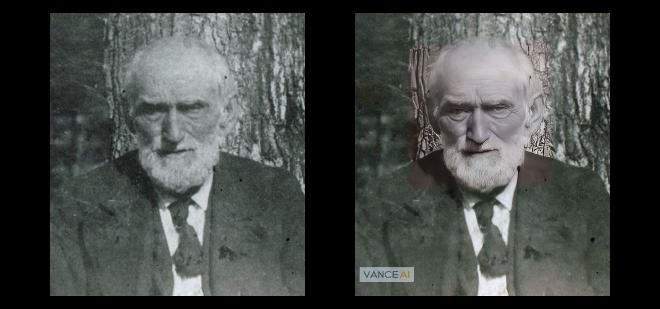
A picture (enhanced by AI) is worth a thousand words
Sometimes putting a book together feels like juggling. I’m not yet finished writing – 53 chapters down, 7 to go – but it’s time to start collecting at least one photograph for each chapter.
Thankfully, that job is made easier by the experts at the Eureka Springs Historical Museum, which makes its large collection of historical photographs available to authors and researchers.
The museum’s staff are helping me find the perfect snapshots capturing the town’s early days for the first section of my book.
The images are old enough to be in public domain, and some have appeared in history books before.
But in 2023, we have something truly new: restoration of vintage photos by artificial intelligence.
The illustration with this post shows a before-and-after example.
On the left is the museum’s original photograph of pioneer John Gaskins, who will be featured in my book. If you’ve ever eaten at Gaskins Cabin Steakhouse, you’ve been inside his home.
On the right is the same photograph with the area around the face enhanced by AI. It took me all of maybe three clicks and 15 seconds. For this example, I used VanceAI.com, one of many choices out there. I haven’t decided yet which I will use.
For my book, AI will simply be a new tool for a skilled human doing most of the work, just as digital cameras and PhotoShop once were. It’s another way for creative types to push their limits.
I definitely won’t be using AI for writing. It’s not that good yet, but more importantly, it would suck all the joy out of the endeavor. I don’t know about you, but I want my role to be more than filling out CAPTCHAs and selecting all the boxes with traffic lights.
I will use AI in the editing process. I’ll write more about what that looks like in a future post, once I get closer to that particular “one more thing” to juggle.
But for now, it’s on to the next batch of photos.